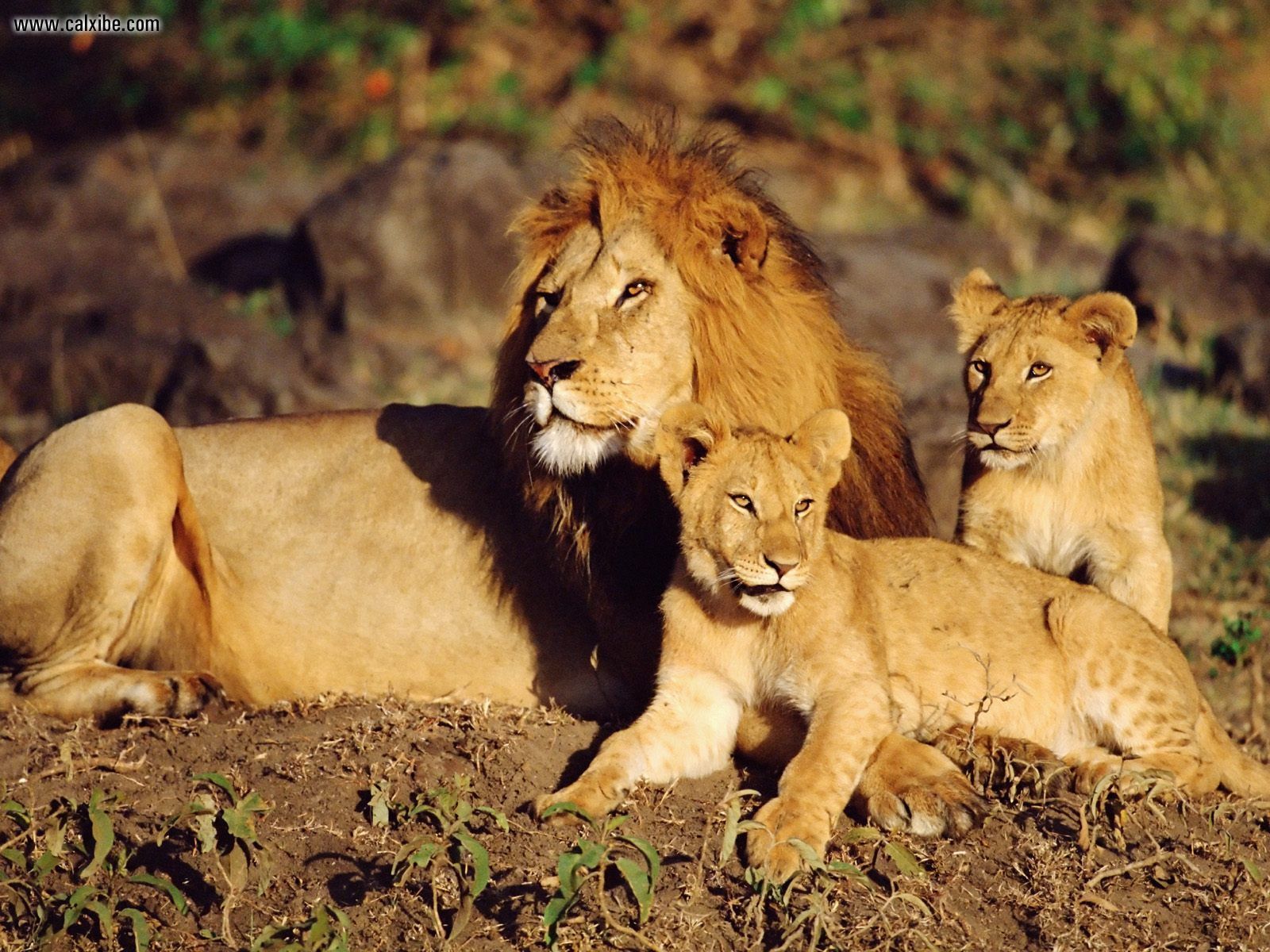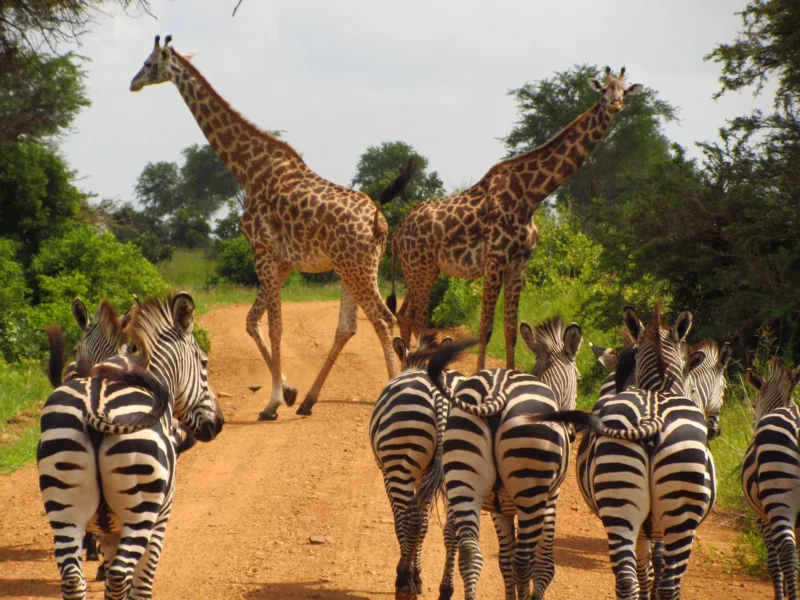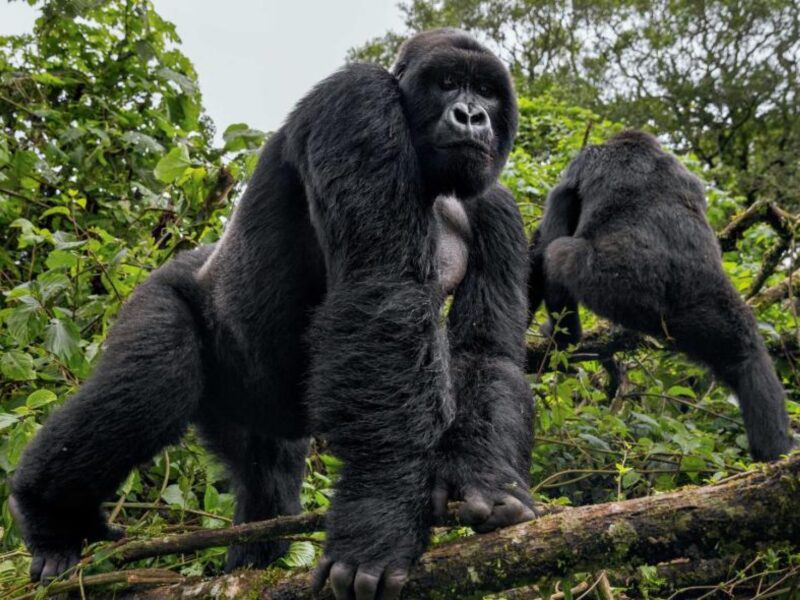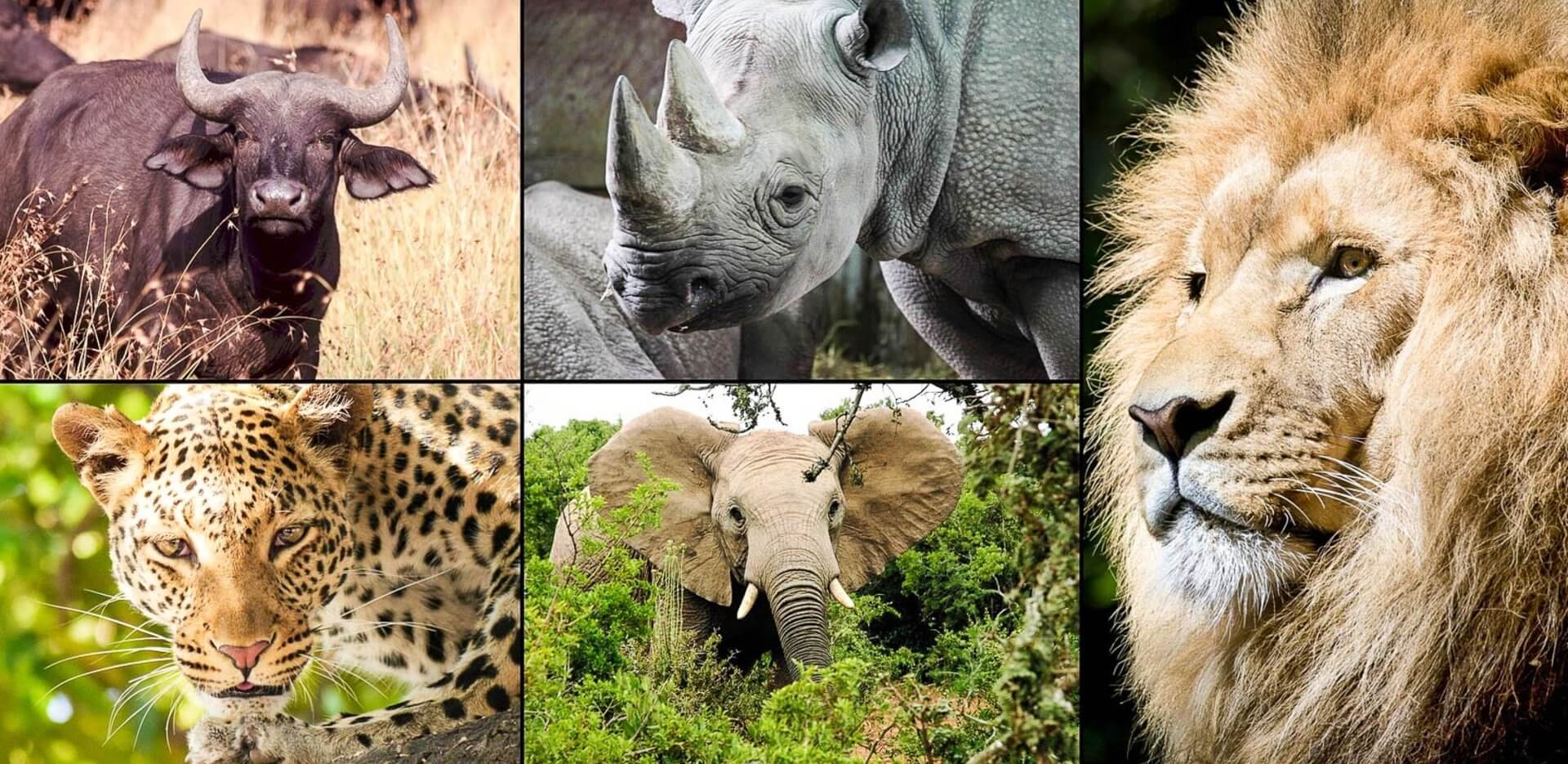
The Big Five In Kenya
April 4, 2025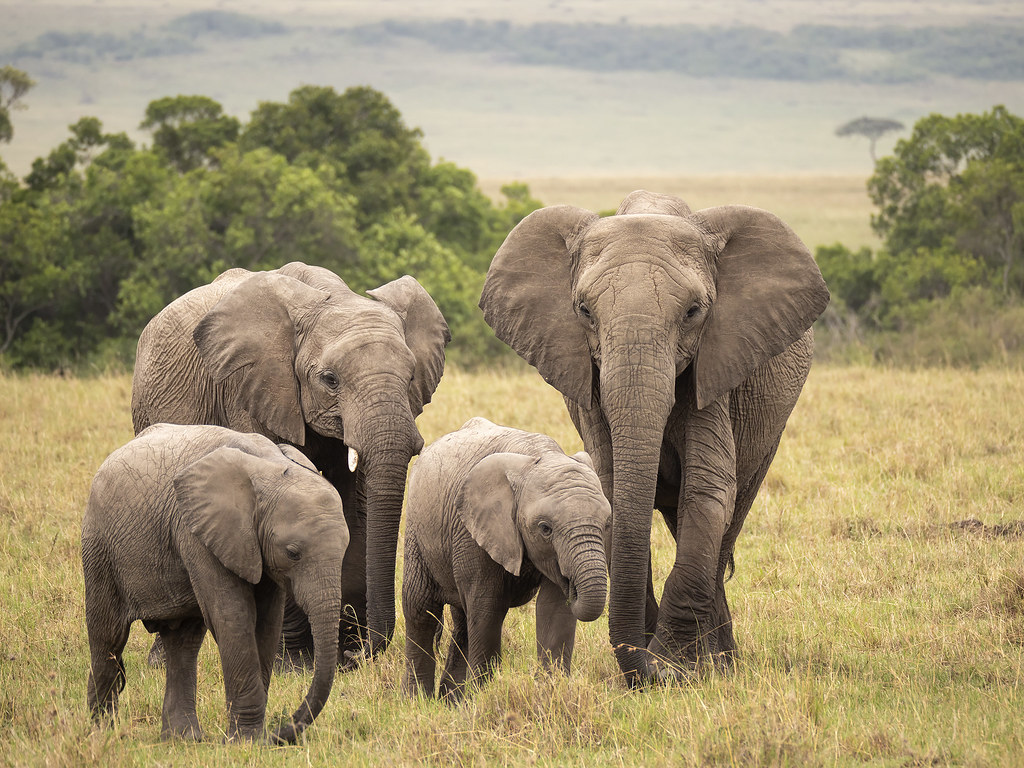
Elephants In Kenya
April 7, 2025Lions in Kenya
Known for their power, beauty, and function as top predators in the environment, lions are among the most recognizable and venerated creatures in Kenya. Lions, sometimes known as the “King of the Jungle,” are unique among African species, and Kenya provides some of the best chances to witness these amazing animals in their natural habitat. But there are also major issues facing lions in Kenya, such as poaching, habitat destruction, and conflict between people and wildlife. Kenya has emerged as a center for lion conservation efforts in spite of these obstacles, and many tourists travel there to see lions in their native environments.
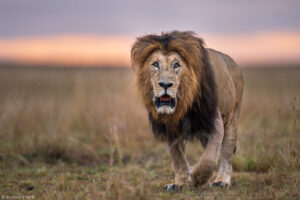
Lions’ physical attributes in Kenya
One of Africa’s most recognizable and formidable predators, lions (Panthera leo) differ from other big cats in their physical attributes. Lions’ physical characteristics are tailored to their environment and their function as apex predators in Kenya, where they are an important species in the wildlife ecosystem. From their muscular builds to their stunning manes, lions in Kenya exhibit physical traits that make them instantly recognizable
1. Size and Physique
Lions are formidable, powerful creatures characterized by their muscular physique, which is adapted for both strength and endurance.
– Male Lions: Males are considerably larger than their female counterparts, typically weighing between 330 and 550 pounds (150 to 250 kg), with some individuals in the savannas of Kenya reaching weights of up to 600 pounds. They can grow to lengths of approximately 10 feet (3 meters), including their tails.
– Female Lions: In contrast, female lions are generally smaller and lighter, weighing between 260 to 400 pounds (120 to 180 kg). Although they are slightly shorter than males, they remain effective and agile hunters.
– General Body Composition: Lions possess elongated, muscular bodies and sturdy limbs, which facilitate short bursts of speed during hunts and enable them to engage in confrontations with rival animals or other lions. Their robust physiques allow them to dominate and capture large prey, including zebras, wildebeests, and buffaloes.
2. The Mane of Male Lions
A prominent physical characteristic of male lions in Kenya is their mane, a dense tuft of hair encircling the neck and head, symbolizing the lion’s strength and maturity.
– Mane Color and Size: The hue of a male lion’s mane can range from light blonde to deep brown or even black. This coloration is often affected by the lion’s age and habitat. Lions residing in Kenya’s cooler highland regions typically exhibit darker, fuller manes, while those in hotter, drier areas may have lighter, less dense manes to aid in heat regulation.
– Functions of the Mane: The mane serves multiple functions:
– Protection: It offers some defense during confrontations with rival males, particularly safeguarding the vulnerable neck area.
– Attraction: A thick, dark mane can signify health and vitality, making it more appealing to potential mates.
– Intimidation: The mane enhances the male lion’s appearance, making them seem larger and more intimidating to other males, thereby deterring challenges during territorial disputes.
3. Fur and Coloration
Lions in Kenya, similar to their counterparts in other regions, possess a coat that varies in color and texture.
4. Teeth and Claws
Lions are equipped with powerful jaws, sharp teeth, and retractable claws, which are all key to their hunting and survival strategies.
– Teeth: Lions have large, sharp canine teeth that can grow up to 2.5 inches (6.3 cm) in length. These teeth are essential for grasping, holding onto prey, and delivering a lethal bite to the throat or neck of their prey to suffocate them. They also have large, sharp incisors and molars that help tear through flesh and bones.
– Claws: Lions’ claws are retractable, meaning they can extend them when needed but also retract them when walking to avoid wear. Their claws are used to grasp and hold onto their prey, making it difficult for the animal to escape once caught. Lions are also capable of using their claws to fight off rivals or defend their territory.
5. Eyes and Vision
Lions have excellent vision, which plays a crucial role in their ability to hunt and navigate their environment.
– Night Vision: Lions have great night vision, which allows them to hunt effectively during the early morning or late evening, when temperatures are cooler. Their eyes are adapted to low light conditions, giving them a significant advantage when hunting nocturnal prey or avoiding predators.
– Eye Color: The eyes of lions are typically golden or amber, providing a striking contrast to their tawny fur. Their eyes are large and positioned forward on their face, giving them binocular vision, which is important for tracking movement during a hunt.
– Hunting Vision: Lions rely heavily on their vision to track prey and assess distances during a chase. Their keen eyesight helps them spot movement at a distance, even when hiding in tall grass.
6. Tail
Lions have long, muscular tails that end in a tuft of black hair. The tail plays a significant role in communication and balance.
– Balance: The tail helps lions maintain their balance, especially when making quick turns during a chase. It is particularly useful when lions sprint after prey or climb rough terrain.
– Communication: Lions use their tails to communicate with other members of their pride. A swishing or flicking tail can indicate irritation, excitement, or alertness, while a calm, still tail usually signals contentment.
7. Strength and Agility
Despite their large size, lions are incredibly agile. They are strong, fast, and capable of short bursts of speed that can reach up to 35 miles per hour (56 km/h) when chasing down prey. Lions in Kenya are capable of taking down large herbivores that may outweigh them by several hundred pounds, such as zebras and buffaloes.
– Strength: Lions are immensely strong, with powerful forelimbs and jaws. They can overpower prey with sheer strength and muscle, often relying on teamwork and coordination within the pride to bring down large animals.
– Agility: While they are not the fastest big cats like cheetahs, lions have excellent stamina and can chase down prey over short distances, making them formidable hunters. They often rely on stealth and strategic positioning to close the distance before launching an attack.
The physical characteristics of lions in Kenya are a testament to their role as apex predators in the African ecosystem. From their imposing size and distinctive manes to their powerful jaws and retractable claws, lions are equipped with everything they need to survive and thrive in the wild. Their physical features not only allow them to be formidable hunters but also contribute to their social structure, helping them maintain their position as one of the most iconic and admired species in the animal kingdom.
Habitat of Lions in Kenya
Lions (Panthera leo) in Kenya are primarily found in the diverse ecosystems of the country’s national parks, reserves, and protected areas. These habitats vary in terms of vegetation, climate, and terrain, but they all provide the essential conditions that lions need to thrive as apex predators. Lions in Kenya are highly adaptable and can live in a variety of environments, from the savanna grasslands to the semi-arid regions of the country’s northeast.
Here’s a detailed overview of the different habitats that lions in Kenya occupy:
1. Savanna Grasslands
The savanna grasslands are the most iconic and common habitat for lions in Kenya. These vast, open plains covered with tall grasses and occasional trees provide an ideal environment for hunting and living in pride groups.
– Characteristics of the Savanna: The savanna is characterized by wide, open spaces with sparse tree cover, which allows lions to move freely and hunt effectively. The grasslands are typically found in central and southern Kenya, such as in areas like the Maasai Mara, Amboseli, and Tsavo National Parks.
– Prey Availability: The savannas are teeming with prey species that lions hunt, including zebras, gazelles, wildebeests, and buffaloes. These prey animals thrive in the open plains, feeding on grasses and shrubs, making the area ideal for lion hunting strategies.
– Vegetation: The vegetation in savannas consists primarily of tall grasses that can be used for cover during stalking. There are also scattered acacia trees and shrubs, which provide some shade, especially during the hotter months.
– Climate: The savanna experiences a tropical climate, with distinct wet and dry seasons. Lions in this habitat have adapted to the fluctuating availability of water and prey, relying on water sources such as rivers, lakes, and waterholes, especially during the dry season.
2. Semi-Arid and Arid Regions
In addition to the fertile savannas, lions are also found in Kenya’s semi-arid and arid regions, where the environment is much harsher. Areas such as the Tsavo National Park and Laikipia Plateau provide a different kind of challenge for lions due to the dry and often barren terrain.
– Characteristics of Semi-Arid Habitat: These areas have scrubland and sparse vegetation, with thorny bushes, scrubby trees, and rocky outcrops. The grass cover is much thinner compared to the savannas, making it more difficult for lions to hide when hunting. However, these regions are home to various prey species adapted to the harsh conditions, including gemsbok, oryx, warthogs, and gazelles.
– Prey Availability: Prey in the semi-arid regions is typically more scattered, and lions must travel further to find sufficient food. In these conditions, lions may have to exert more effort and patience to hunt, often relying on teamwork within the pride to bring down larger prey.
– Water Availability: The semi-arid regions are drier, and water sources may be scarce, especially during the long dry season. Lions in these habitats must have access to waterholes or river systems, and they often travel long distances to find water during the driest months.
– Adaptation to Heat: Lions in these habitats tend to be more adapted to high temperatures. They spend much of the day resting in the shade of trees or rocky formations to avoid the heat, becoming more active during the cooler mornings and evenings when they hunt.
3. Forested Areas
Although lions are not typically associated with dense forests, they do inhabit wooded areas in some parts of Kenya. Forested environments, such as those found in the Aberdare Range and parts of Mount Kenya, provide lions with a different type of landscape compared to the open savanna.
– Characteristics of Forest Habitat: The forested areas in Kenya tend to have thicker vegetation, with tall trees and dense underbrush. These areas often have cooler temperatures and higher rainfall compared to the dry savannas, providing a more hush environment with a variety of plant and animal species.
– Prey Availability: Forested habitats in Kenya support various prey species, including bushbuck, duiker, and colobus monkeys, which are found in the dense forest floor. However, lions may not hunt as efficiently in these areas due to the thick cover, making it harder to stalk prey.
– Water Sources: Forested areas often have rivers and streams, providing easy access to water. These areas are also known for having a more stable water supply compared to the more arid regions of Kenya.
– Climate: The climate in forested areas is generally cooler and wetter than in the savanna or semi-arid regions, with a higher level of rainfall throughout the year.
4. Mountainous Areas
Kenya is home to several mountainous regions, such as the Aberdare Range and Mount Kenya, where lions can also be found. These habitats are not as common as the savannas, but they provide lions with unique opportunities.
– Characteristics of Mountainous Habitat: The elevation and rugged terrain present challenges for lions, as the rocky cliffs and steep slopes make movement more difficult. However, lions have adapted to the cooler, higher altitudes where prey species such as baboons, antelope, and buffaloes can be found.
– Prey and Water Availability: Lions in mountainous areas typically hunt the same types of prey as those in the savannas but must travel to lower altitudes to find enough food. Water sources such as mountain streams and rivers are abundant in these regions, allowing lions to stay hydrated even in the dry seasons.
– Climate: The cooler, temperate climate in the mountainous areas contrasts with the heat of the savanna. Lions in these areas are more likely to seek shelter from the cold during the night, and they may exhibit different behaviors due to the altitude and temperature differences.
5. Human-Influenced Areas
As human populations grow in Kenya, lions are increasingly found in areas that are in close proximity to human settlements. These include agricultural lands, ranches, and tourism lodges in wildlife reserves. These areas offer lions new challenges and risks, as the encroachment of human activity affects their natural behavior and habitat.
-Challenges: Lions in human-influenced areas often face habitat fragmentation and human-wildlife conflict, where lions may enter agricultural fields or attack livestock, resulting in retaliation from local communities. They may also encounter dangers from vehicle traffic in protected areas and encroaching settlements that reduce their available territory.
– Adaptations: In these areas, lions are forced to adapt to human presence. They may become more nocturnal or move into less populated areas to avoid humans. Some lions have even learned to avoid populated regions by following migratory patterns or shifting their territories.
Lions in Kenya inhabit a variety of ecosystems, from the open savannas to the semi-arid deserts, from the mountainous regions to the forested highlands. Their ability to adapt to different environments has allowed them to thrive in a wide range of habitats, each presenting unique challenges and opportunities. However, the growing pressures from habitat loss, human-wildlife conflict, and climate change are continuously impacting lion populations, making conservation efforts essential to preserving their natural habitats and ensuring the future survival of these iconic predators.
Social Structure and Behavior of Lions in Kenya
Lions (Panthera leo) in Kenya, like those throughout Africa, are known for their highly social behavior, forming tight-knit family units called prides. These prides, while primarily composed of related females and their cubs, also include a few adult males, and their social structure plays a crucial role in their survival and effectiveness as predators. Lions in Kenya can be found in a range of habitats, from the savanna plains of Maasai Mara to the arid regions of Tsavo, but their social behavior remains consistent across different ecosystems. Here’s a detailed look at the social structure and behavior of lions in Kenya.
1. The Pride: A Social Unit
A lion pride is the cornerstone of social behavior for lions in Kenya. Prides consist of related females, their cubs, and one or more adult males. These prides are central to the survival of the lions, offering safety, cooperation in hunting, and protection for cubs.
– Size and Composition: In Kenya, the size of a lion pride can vary, with some prides containing just 5 to 10 lions, while others, especially in the Maasai Mara or Amboseli, may have up to 20 or more lions.
– Females: Female lions are the heart of the pride. They are often related, forming strong bonds that help them to cooperate in hunting and protecting cubs. The bond between females is typically very strong, and their cooperation ensures that the pride remains a functioning social unit. In Kenya’s prides, females may remain within the pride throughout their lives, reinforcing the family structure.
– Males: Males, on the other hand, tend to be fewer in number—usually 1 to 3 adult males per pride. The male’s primary role is to defend the pride’s territory and protect the females and cubs from outside threats, especially other males. Males also mate with the females of the pride. Lions in Kenya often form coalitions of males to increase their chances of taking control of a pride. A coalition is a group of males that work together to assert dominance and protect their territory.
– Cubs: Cubs are a vital part of the pride’s social structure. They are raised by their mothers, and the other females often help in looking after the young. Cubs are born with spots, which fade as they mature. They start learning essential survival skills from an early age by playing and interacting with other cubs and adults in the pride.
2. Hunting and Cooperative Behavior
One of the most fascinating aspects of lion behavior in Kenya is their cooperative hunting strategies. Unlike other big cats, lions hunt in groups, using teamwork to bring down large prey
– Female Hunting: In the Kenyan savannas and grasslands, female lions are the primary hunters. They usually work together in coordinated efforts, often surrounding prey to increase their chances of a successful kill. This cooperation is essential for bringing down large herbivores such as wildebeests, zebras, and buffaloes. Lions rely on stealth and teamwork to get close to their prey before launching a collective attack.
– Male Participation: While males are not the primary hunters in most prides, they sometimes assist when the prey is particularly large or dangerous. In some instances, males may contribute significantly to a hunt, especially when larger prey such as giraffes or buffaloes are targeted. Males also serve as backup during hunts by intimidating prey or chasing them toward waiting females.
– Sharing the Kill: Once the prey is brought down, lions exhibit a social hierarchy during feeding. Males usually have priority when feeding, followed by the females, with the cubs being the last to eat. In some cases, the cubs may not get much food if the pride is under stress or if the male takes over the kill. However, females and cubs are generally well-fed, especially in prides that hunt successfully.
3. Hierarchy and Dominance within the Pride
Lions in Kenya exhibit clear dominance structures within the pride, particularly among females, though males also play a role in maintaining order.
– Female Hierarchy: Among the females in the pride, there is a matriarchal structure, with older females generally holding higher status. The dominant females are usually the mothers or older sisters who have proven themselves as skilled hunters and protectors of the cubs. These females often have more authority in making decisions regarding the pride’s movements or hunting strategies.
– Male Hierarchy: Males have a different role in the social structure. Lions in Kenya generally experience a challenging and dynamic male hierarchy. When a new coalition of males takes over a pride, they may kill the cubs of the previous dominant males to bring the females into estrus more quickly. This behavior, known as infanticide, is a strategy to ensure the new males’ genes are passed on. Once in power, a male may stay with a pride for several years before being displaced by younger, stronger males or coalitions.
– Cubs and Juvenile Lions: Cubs usually stay within the pride until they are old enough to fend for themselves. However, once males reach maturity, they are often dispersed from the pride to form their own coalitions or to join another pride. Females may leave their natal pride when they are older, although some remain with their mothers and relatives.
4. Communication and Social Bonding
Lions in Kenya have a variety of communication methods that help maintain their social bonds and coordinate behaviors within the pride.
– Roaring: Roaring is one of the most iconic behaviors of lions. Lions use their roar to mark territory, communicate with other prides, and alert pride members to their presence. The roar can be heard up to 5 miles (8 km) away, allowing lions to communicate across vast distances. Roaring also helps coordinate the pride’s movements during hunting or when defending the territory.
– Body Language: Lions use a variety of body language cues to communicate with each other. For example, tail flicks, facial expressions, and postures are all important forms of communication. A lion standing tall with its mane fluffed up is signaling dominance, while a lion showing its teeth may be a sign of aggression. When lions rub their faces or bodies together, it is a way of strengthening social bonds within the pride.
– Social Play: Cubs and juvenile lions engage in playful behaviors that help them develop the skills needed for survival. These behaviors include mock fighting, chasing, and pouncing on each other. Social play also helps lions establish their positions in the pride and test their strength and agility.
5. Mating Behavior
Lions in Kenya mate year-round, but mating is typically more frequent during the rainy season, when food is abundant. Mating is an important aspect of lion social behavior, as it ensures the pride’s survival through the birth of new cubs.
– Mating Rituals: Male lions often display a range of behaviors to attract females, including roaring, patrolling territory, and demonstrating their strength by fighting off rivals. Once a male successfully claims a pride, he mates with the females in the group, usually on a cyclical basis. Females in the pride may mate with the male they are most closely bonded with, and mating typically lasts several days, during which the male and female remain close to each other.
– Infanticide: Male lions are known to practice infanticide when they take over a new pride. By killing the cubs sired by the previous males, the new male ensures that the females will return to estrus sooner, allowing him to father his own offspring.
6. Territorial Behavior
Lions in Kenya are highly territorial and use scent marking, vocalizations, and physical displays to protect their pride’s territory. Territories can cover large areas, and pride members will patrol these boundaries regularly to ward off rivals.
– Scent Marking: Lions mark their territory with urine, feces, and scent glands located on their faces and paws. These marks send strong signals to other lions that the area is claimed.
– Boundary Defense: Males are primarily responsible for defending the pride’s territory. They patrol the boundaries, roar to warn off intruders, and engage in physical confrontations when necessary to defend the pride.
The social structure and behavior of lions in Kenya reflect their highly organized, cooperative nature. From the close bonds between females to the complex dynamics between males, pride members rely on each other for hunting, protection, and survival. Their behaviors, including cooperative hunting, territorial defense, and social bonding, help maintain the strength and cohesion of the pride, making lions one of the most fascinating and iconic species in Kenya’s wildlife.
Diet and Feeding Habits of Lions in Kenya
Lions (Panthera leo) are apex predators, and their diet and feeding habits are a crucial part of their role in the ecosystem. As carnivores, lions primarily hunt other animals for food, with their diet consisting of a wide range of herbivorous species found in Kenya’s diverse landscapes, from the savannas to the more arid areas. Lions in Kenya are opportunistic hunters, using their physical strength and social cooperation to catch large prey. Here’s a detailed look at their diet and feeding habits.
1. Primary Diet: Carnivorous Diet
Lions are obligate carnivores, meaning that they rely entirely on animal-based food sources for nutrition. Their diet consists mainly of medium to large-sized herbivores, although lions have been known to scavenge on occasion, especially when food is scarce.
– Common Prey:
-Wildebeests: One of the most common prey species, especially in the Maasai Mara during the annual wildebeest migration.
– Zebras: Another frequent target for lions, particularly in the savannas where they are abundant.
– Buffalo: Lions often hunt buffalo, which can be a difficult and dangerous prey choice due to their size and strength.
– Thomson’s Gazelles and Impalas: Smaller herbivores that lions may hunt when larger prey is not available.
– Giraffes: Lions are known to hunt giraffes, although this is typically only done by groups of lions due to the giraffe’s size and strength.
– Scavenging: Although lions are skilled hunters, they are also known to scavenge. They will steal kills from other predators like cheetahs, hyenas, or leopards, especially if the prey is too large for the original hunter to consume quickly. Lions will often chase off other carnivores to take over their kills.
2. Cooperative Hunting: Group Effort
One of the most remarkable aspects of lion behavior, particularly in Kenya, is their cooperative hunting. Unlike most other big cats, lions hunt in groups, and this teamwork allows them to take down large prey that would otherwise be difficult or impossible to catch individually.
– Role of Females: Female lions, especially in prides, are the primary hunters. They typically coordinate their hunting efforts, with some members of the pride stalking prey from one direction, while others ambush from a different angle. This coordinated strategy increases their chances of success and allows them to take down large herbivores.
– Hunting Strategy: Lions generally hunt in the early morning or late evening, when the temperatures are cooler and their prey is less likely to be active. They often use stealth and patience to get as close as possible to their prey before launching a coordinated attack. Their short bursts of speed are crucial to catching prey, and teamwork is key to wearing down or cornering the animal.
– Male Participation: While males typically do not do the majority of hunting, they do assist, particularly when large, dangerous prey is involved. For example, when taking on large prey like buffalo or giraffes, males will join the hunt to help bring down these formidable animals. Males may also intimidate prey or chase it toward waiting females.
3. Feeding Hierarchy
Lions have a clear hierarchy when it comes to feeding, with different pride members having access to the kill in a specific order.
– Priority of Feeding: When a hunt is successful, the dominant males typically eat first. The males’ larger size and strength often allow them to take the prime portions of the kill, such as the best meat, often starting with the tender organs.
– Females: After the males have had their fill, the females get their turn. As the primary hunters, they have the next priority, though this can vary depending on the specific pride’s dynamics. The females eat quickly and often do so in a more cooperative manner, sharing meat among themselves.
– Cubs: Lion cubs are typically the last to eat, and they rely on the adults for food. Cubs may be allowed to eat after the females, but they often get less food, especially if the pride is hungry or if food is scarce. However, the cooperative nature of the pride usually ensures that cubs are fed regularly.
4. Feeding on Large Prey
Lions in Kenya often take down large herbivores, which provide significant meals for the pride. These kills are a major source of food, and lions can gorge on them for extended periods.
– Zebras and Wildebeests: These herbivores are among the most commonly hunted by lions, particularly during the annual wildebeest migration in the Maasai Mara. A pride of lions can bring down a wildebeest in a matter of minutes if they work together efficiently.
– Buffaloes: Buffalo are large and powerful animals, making them a challenging target. Lions usually need to hunt buffalo in groups because of their strength and formidable horns. When lions succeed in taking down a buffalo, it can provide enough food for the entire pride for several days.
– Giraffes and Large Antelopes: Lions will also target large prey like giraffes, though this is less common because of the giraffe’s size and the difficulty involved in bringing one down. However, when lions hunt giraffes, they typically work together to bring down the animal, targeting its vulnerable legs or neck.
5. Water and Hydration
While lions are primarily carnivores, their diet also includes moisture that they get from their prey. Most of the moisture required by lions comes from the blood of their prey, but they also drink water when available. In Kenya’s hot, arid areas like Tsavo, lions may travel long distances in search of water. In wetter areas like the Maasai Mara, lions can access water more easily and may drink more frequently.
– Water Consumption: Lions generally drink water every few days, especially in the dry season when they have to work harder to find prey. In areas with abundant water sources, lions may drink daily, particularly during periods of high activity or after a successful hunt.
6. Hunting Seasons and Dietary Flexibility
Lions in Kenya do not follow a strict seasonal diet. However, certain periods in the year affect their feeding habits, especially the wildebeest migration in the Maasai Mara, which provides lions with an abundance of prey. During the migration, lions may experience a feeding boom, while during other times of the year, when prey availability is lower, they may rely on smaller herbivores such as gazelles and impalas.
– Dietary Flexibility: Lions are opportunistic feeders and can adjust their diet based on the availability of prey. They may switch between hunting different types of animals depending on what is abundant in the area. For example, lions in Tsavo may focus more on giraffes, while those in Maasai Mara might target wildebeests during migration.
The diet and feeding habits of lions in Kenya are shaped by their role as apex predators. Their cooperative hunting strategies allow them to take down large herbivores, and their feeding hierarchy ensures that the pride operates as a social unit, with dominant males feeding first and cubs last. Lions in Kenya rely heavily on their social bonds to bring down and consume large prey, with their diet varying depending on the time of year, available food, and environmental factors. Their adaptability and ability to cooperate in hunts make them one of the most successful predators in Africa.
Conservation Status and Challenges Faced by Lions in Kenya
Lions (Panthera leo) are among the most iconic and celebrated wildlife species in Kenya, where they are often referred to as the “King of the Jungle.” They are a key part of the country’s rich biodiversity and an essential attraction for eco-tourism. However, lions in Kenya, like many other wild animals, face a range of challenges that threaten their survival. While lions are still found in many parts of the country, their population is under significant pressure due to human-wildlife conflict, habitat loss, poaching, and other factors.
Conservation Status of Lions in Kenya
The lion population in Kenya is currently categorized as vulnerable by the International Union for Conservation of Nature (IUCN), and their numbers are in decline across the country. According to estimates, Kenya is home to between 2,000 and 2,500 lions, with the majority of them concentrated in the savanna ecosystems, including iconic wildlife areas like the Maasai Mara and Amboseli National Park.
– IUCN Red List: Lions are classified as Vulnerable globally, and in Kenya, their situation is concerning. The population has been reduced by more than 50% over the last few decades, and the decline is expected to continue unless effective conservation measures are implemented.
– Protected Areas: Kenya’s national parks and reserves, including the Maasai Mara, Tsavo, Amboseli, and Samburu, provide crucial sanctuaries for lions. These protected areas support a large portion of the lion population, with the Maasai Mara and Tsavo being among the most important. However, lions also roam outside these areas, where they face increased risks due to human activities.
Main Conservation Challenges Faced by Lions in Kenya
While there have been successful conservation efforts to protect lions in Kenya, several challenges continue to threaten their survival in the wild. These challenges range from human-wildlife conflict to habitat degradation. The key issues affecting lion conservation in Kenya include:
1. Human-Wildlife Conflict
Human-wildlife conflict is one of the most significant threats to lions in Kenya, particularly in areas where lions share space with human populations.
– Livestock Predation: Lions are often seen as a threat to livestock, especially in areas adjacent to protected reserves where pastoral communities graze their animals. Lions, in search of food, may prey on cattle, goats, and sheep. This leads to retaliation from local communities, where lions are killed to protect livestock. Such conflicts not only result in the loss of individual lions but also fuel negative attitudes toward lion conservation.
– Farmers’ Concerns: In agricultural areas near wildlife reserves, lions may also prey on smaller livestock such as sheep or goats, which further exacerbates tensions with farmers. Farmers may set traps, poison, or shoot lions in retaliation, leading to a higher mortality rate among lions living near human settlements.
– Compensation and Solutions: Some programs have been implemented to mitigate this conflict, such as compensation schemes for farmers whose livestock are killed by lions, as well as lion-proof enclosures for livestock. However, these measures are not always sufficient or widespread, and the tension between wildlife conservation and local livelihoods remains a challenge.
2. Habitat Loss and Fragmentation
Lions require large territories for hunting, socializing, and breeding. The expansion of human settlements, agricultural land, and infrastructure development is fragmenting their habitats and reducing the space available for lions.
– Land Use Changes: As human populations grow and more land is converted for agriculture or urban development, lions find themselves with less land to roam. In some areas, their movements are restricted to smaller, isolated patches of land, which leads to inbreeding and decreases genetic diversity.
– Protected Areas vs. Human Settlements: While national parks and reserves provide important refuge for lions, many lions in Kenya live outside protected areas, where they are vulnerable to habitat encroachment and increased human activity. The limited connectivity between protected areas also prevents lion populations from expanding or migrating, which contributes to their decline.
3. Poaching and Trophy Hunting
Although poaching for lions is not as widespread as it is for other species like elephants or rhinos, lions in Kenya still face threats from illegal hunting and trophy hunting.
– Poaching for Body Parts: Lions are sometimes targeted for their body parts, including their claws, teeth, and skins. These parts are sold in illegal wildlife markets, sometimes for traditional medicine or as trophies for collectors.
– Trophy Hunting: While legal hunting of lions is regulated in Kenya, there is still a debate about the ethics of trophy hunting. Trophy hunting can generate revenue for conservation, but if not well-regulated, it may result in the loss of mature, genetically important individuals from the population.
4. Declining Prey Populations
Lions are dependent on a steady supply of prey to maintain their populations, but many of the herbivores that lions rely on are themselves threatened by habitat loss, poaching, and over-hunting
– Overgrazing and Habitat Degradation: In some regions of Kenya, human encroachment has led to habitat degradation, with overgrazing and the depletion of natural resources impacting prey species. Without sufficient prey, lions face starvation, which further affects their numbers.
– Competition with Other Predators: Lions also face competition from other predators like hyenas, cheetahs, and leopards, which may target similar prey. In some cases, lions will even scavenge from the kills of other predators, but this competition can lead to challenges in securing enough food.
5. Climate Change
Climate change is a growing concern for wildlife conservation in Kenya, and lions are not immune to its effects.
– Water Scarcity: Kenya is experiencing more frequent droughts and unpredictable rainfall patterns. Lions depend on access to water sources, and the changing climate is reducing the availability of water for both lions and their prey. This can lead to malnutrition and increased mortality, especially during dry seasons.
– Changes in Prey Distribution: Climate change also affects the distribution of prey species. As vegetation and water sources shift due to changing weather patterns, the distribution of herbivores may change, forcing lions to adapt to new territories and hunting strategies, sometimes with limited success.
Conservation Efforts and Solutions
Despite the challenges faced by lions in Kenya, there are a number of ongoing conservation efforts aimed at protecting and stabilizing their populations. These include:
– Protected Areas: The establishment and maintenance of national parks and reserves such as the Maasai Mara, Tsavo, and Amboseli are critical for lion conservation. These areas offer safe havens where lions can live and hunt with minimal human interference.
– Community-Led Conservation: Local communities are increasingly being involved in conservation efforts through programs that promote coexistence between lions and people. Community-based conservation programs provide incentives for communities to protect lions, such as through eco-tourism and sustainable grazing practices.
– Conflict Mitigation Programs: Measures such as livestock enclosures and compensation schemes for farmers and herders who lose livestock to lions have been implemented to reduce retaliation killings. Additionally, education and awareness programs aim to change attitudes toward lions.
– Research and Monitoring: Ongoing research and monitoring of lion populations, behavior, and health are critical to understanding the challenges lions face and developing effective conservation strategies. Organizations such as the Lion Recovery Fund and local NGOs conduct regular surveys and monitoring programs to track lion populations and their habitats.
– Trophy Hunting Regulations: Kenya banned trophy hunting in 1977, and this has played a significant role in the conservation of lion populations. While trophy hunting still exists in some African countries, Kenya’s decision to outlaw it has contributed to the lion population’s protection.
Lions in Kenya face numerous challenges that threaten their survival, including human-wildlife conflict, habitat loss, poaching, declining prey populations, and the impacts of climate change. Despite these challenges, there are ongoing efforts to conserve lion populations and mitigate the threats they face. Continued commitment from the government, local communities, and conservation organizations is essential to ensuring that lions remain an iconic and integral part of Kenya’s wildlife heritage. With effective management, sustainable land-use practices, and community involvement, lions in Kenya can be protected for future generations to enjoy.

